When you have a wide range of people and projects coming in and out your doors, you have to be prepared. Sometimes it is as simple as making sure the scissors and shears are sharp and there are pins available everywhere; sometimes it means acquiring and using some fairly obscure tools.
Ladies and Gentlemen, may we introduce the glove stretcher:
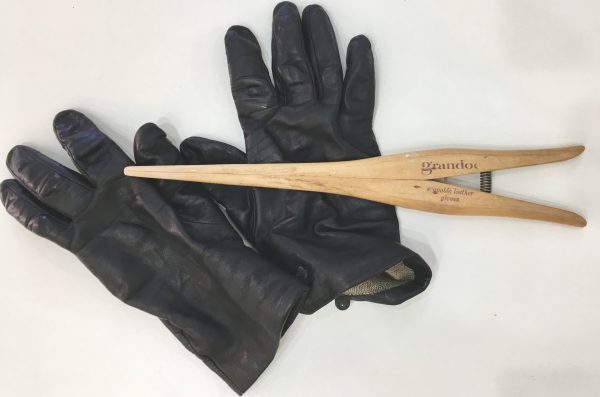
A glove stretcher was originally developed as a tool to stretch out turned gloves and to re-shape leather and kid gloves that had been washed and needed to be blocked.
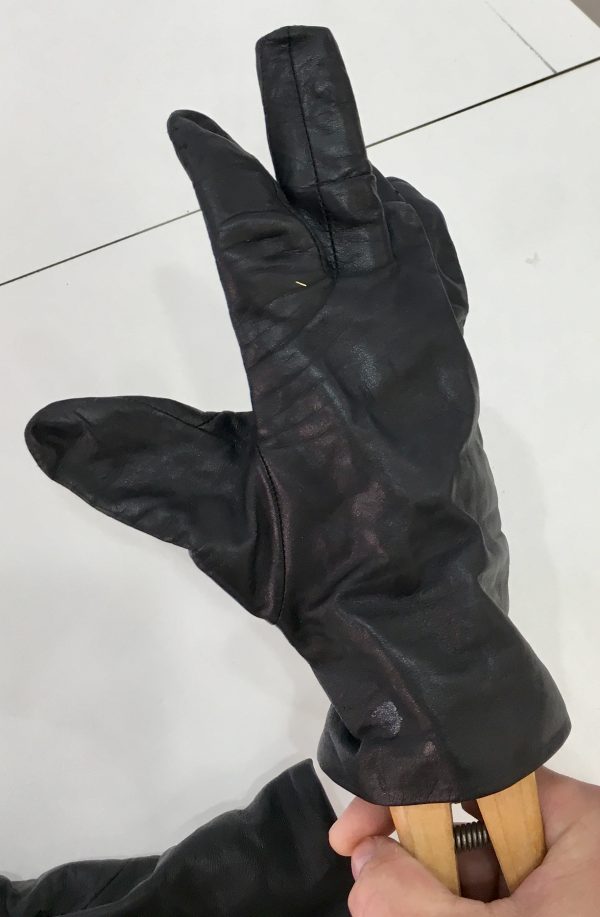
It works the same way that a clamp works, but you use it in the opposite way. Clamps are open when you grasp the handle and exert force then hold something in place when closed. These are open when you grasp the handle and are used (generally) in the open position.
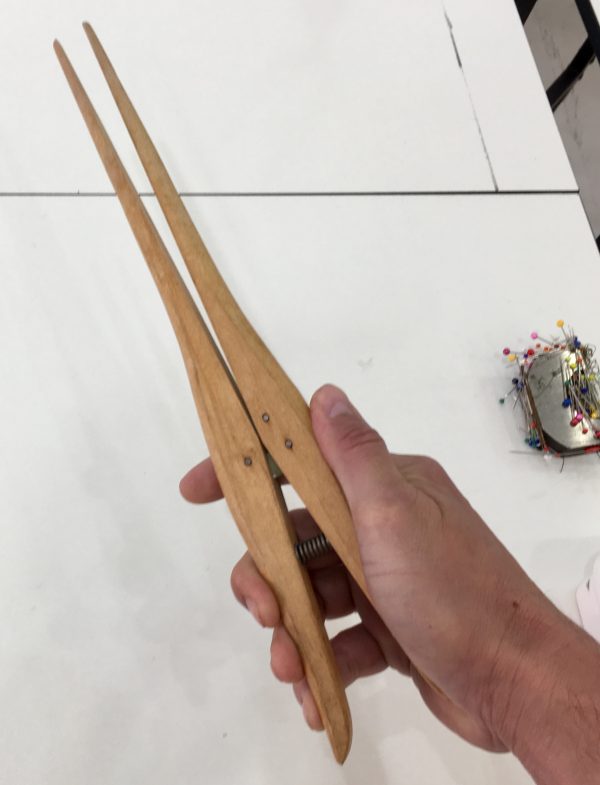
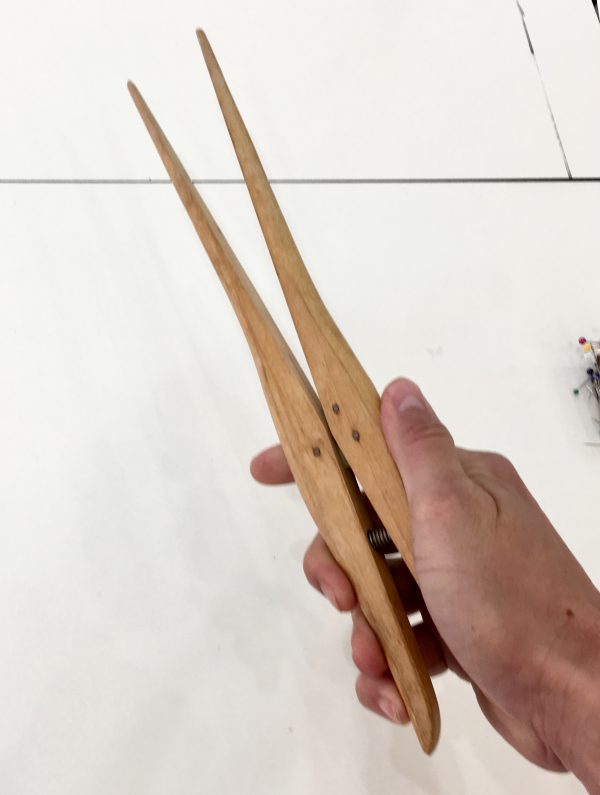
But they aren’t just for opening gloves around here… Pretty much any sewing project that has tight corners and is hard to get to will be done with a glove stretcher. Because they are wooden, we can also apply a good deal of heat and a little moisture.
For fussy applications, like odd shapes in millinery, tailoring, or getting long thin turnings perfect, we work the fabric over the glove stretcher and use it in combination with an upturned iron like we talked about in this post about pressing velvet and pile fabrics.

And it works like this:
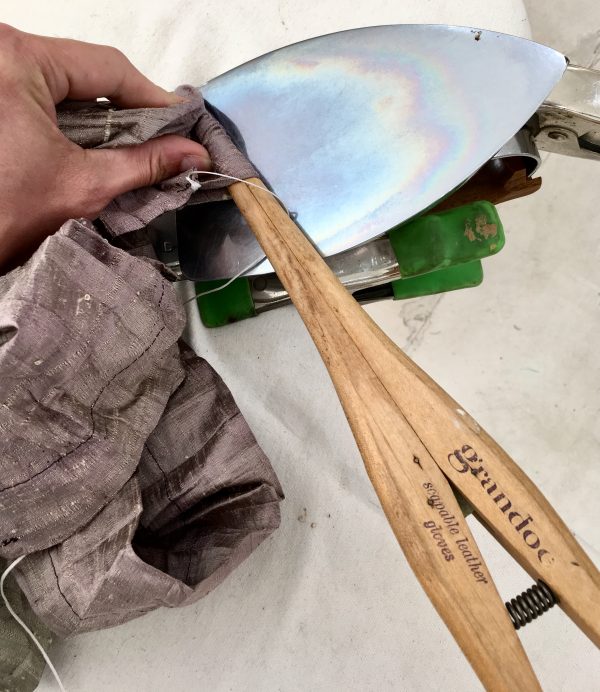

You can also use it as a setting clamp when you are working in a fabric that doesn’t want to lay right when you are tailoring:


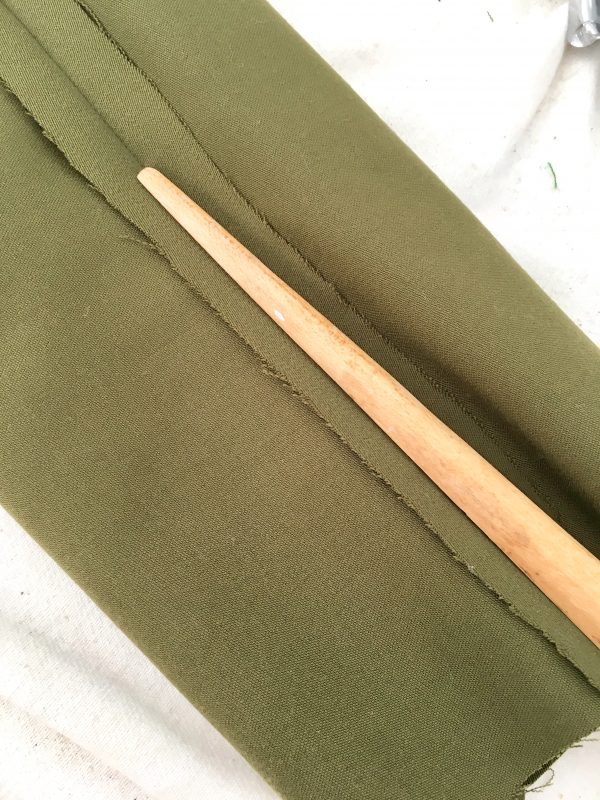
In this case, you would press it with heat and steam, and then to avoid over-working the fabric, you can put the glove stretcher on while it is still hot and moist. If it is a fabric that is prone to strike-through, you can use a press cloth. Let it cool, and then take it off. It works especially well in medium to heavy weight wools that just don’t want to lay right.
And that is that. Glove stretcher. Obscure but not unknown. Handy-dandy and really useful for your own workroom or sewing studio. We even end up using it for weight and grasp when we are spinning our own matching cord for things:

A couple of things: Do NOT buy the plastic glove stretchers from Amazon – they are not going to hold up to the varied uses we talk about here. They will stretch and dry your wet gloves. That is all they can do for you.
You can usually find them on Ebay for US$5-25. Do not buy the silver or ivory ones, either. You want wood – preferably maple. The silver and ivory sets will either get ruined, mark up lighter fabrics, or conduct heat.
